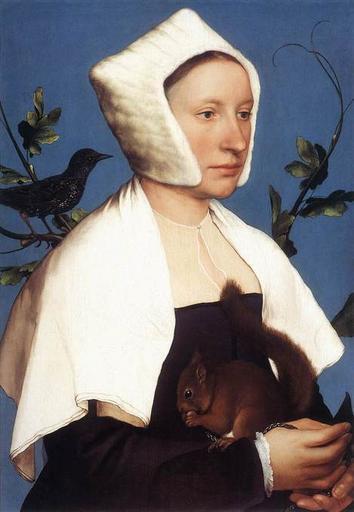MAKE A MEME
View Large Image

| View Original: | Anne_Lovell_by_Holbein.jpg (469x678) | |||
| Download: | Original | Medium | Small | Thumb |
| Courtesy of: | www.flickr.com | More Like This | ||
| Keywords: The National gallery says: Probably painted during Holbein's first visit to England in 1526-8, it has been suggested, very plausibly, that the sitter is Anne Lovell. The starling in the background and the pet squirrel on a chain may have been intended to allude to her name: the Lovell family showed squirrels on their coat of arms and owned a house at East Harling in Norfolk. It is conceivable that the portrait was once part of a pair of husband and wife. Squirrels were popular pets in England as early as the 14th century. In other portraits of women and children by Holbein pet animals such as a monkey and a marmoset are included; in portraits of men he depicts the falcons used in hunting. The sitter in the National Gallery painting is unlikely to have posed with either the squirrel or the starling: Holbein probably made separate studies of them in drawings. The National gallery says: Probably painted during Holbein's first visit to England in 1526-8, it has been suggested, very plausibly, that the sitter is Anne Lovell. The starling in the background and the pet squirrel on a chain may have been intended to allude to her name: the Lovell family showed squirrels on their coat of arms and owned a house at East Harling in Norfolk. It is conceivable that the portrait was once part of a pair of husband and wife. Squirrels were popular pets in England as early as the 14th century. In other portraits of women and children by Holbein pet animals such as a monkey and a marmoset are included; in portraits of men he depicts the falcons used in hunting. The sitter in the National Gallery painting is unlikely to have posed with either the squirrel or the starling: Holbein probably made separate studies of them in drawings. | ||||